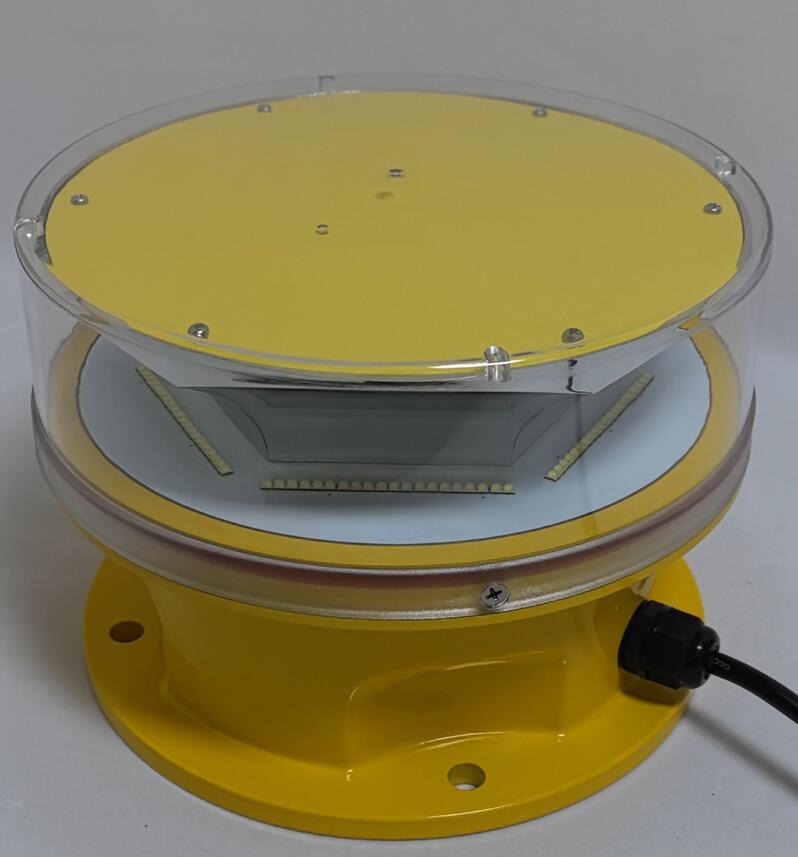
In the vast realm of scientific exploration, there are phenomena that intrigue and challenge our understanding. One such enigma is medium intensity obstruction light. This unique combination of words holds the promise of unlocking new insights into the nature of light and its interaction with the world around us.
Light is a fundamental force of nature, essential for life and the functioning of the universe. It comes in various intensities, from the faint glow of a distant star to the blinding brilliance of a laser. Medium intensity light occupies a middle ground, not too weak to be imperceptible nor too strong to be overwhelming. It is a balance that can have significant implications in different fields.
Obstruction, on the other hand, implies a hindrance or barrier. When light encounters an obstruction, its path is altered, and its properties can change. This can occur due to physical objects, atmospheric conditions, or even the properties of materials through which it passes. Medium intensity obstruction light, therefore, represents a specific case where light of a particular intensity is impeded in some way.

One area where medium intensity obstruction light is of particular interest is in optics. The study of light and its behavior is crucial for the development of technologies such as lenses, mirrors, and optical fibers. When medium intensity light is obstructed, it can lead to phenomena such as diffraction, refraction, and scattering. These effects can be harnessed for various applications, from creating beautiful rainbows to improving the resolution of optical instruments.
In astronomy, medium intensity obstruction light can play a significant role in understanding the universe. The light from distant stars and galaxies must travel through vast distances of space, often encountering obstructions such as dust clouds and gas nebulae. These obstructions can absorb, scatter, or otherwise alter the light, making it difficult to observe and study these celestial objects. By understanding the properties of medium intensity obstruction light in astronomical contexts, we can develop better techniques for observing and analyzing the universe.
In the field of medicine, medium intensity obstruction light can have applications in imaging technologies. Medical imaging techniques such as X-rays, CT scans, and MRI rely on the interaction of different forms of radiation with the human body. When light of medium intensity is obstructed in a controlled manner, it can provide valuable information about the internal structure and function of organs and tissues. This can help doctors diagnose diseases and plan treatments more effectively.
Moreover, medium intensity obstruction light can also have environmental implications. For example, the obstruction of sunlight by pollutants in the atmosphere can affect climate patterns and the health of ecosystems. By studying the effects of medium intensity obstruction light on the environment, we can develop strategies to reduce pollution and protect our planet.
medium intensity obstruction light
R43
RT3
675
Despite its importance, the study of medium intensity obstruction light is still in its infancy. There are many unanswered questions and challenges that need to be addressed. For example, how do different types of obstructions affect the properties of medium intensity light? What are the optimal conditions for observing and measuring medium intensity obstruction light? How can we use this knowledge to develop new technologies and applications?
To answer these questions, scientists and researchers from different disciplines need to collaborate. They need to combine their expertise in optics, astronomy, medicine, environmental science, and other fields to gain a comprehensive understanding of medium intensity obstruction light. This will require the development of new experimental techniques and theoretical models, as well as the sharing of data and knowledge across different research communities.
In conclusion, medium intensity obstruction light is a fascinating and complex phenomenon that holds great promise for scientific discovery and technological innovation. By delving deeper into its mysteries, we can unlock new insights into the nature of light and its interaction with the world around us. Whether in optics, astronomy, medicine, or the environment, medium intensity obstruction light has the potential to transform our understanding and improve our lives. Let us embark on this journey of exploration and discovery, and unravel the enigma of medium intensity obstruction light.